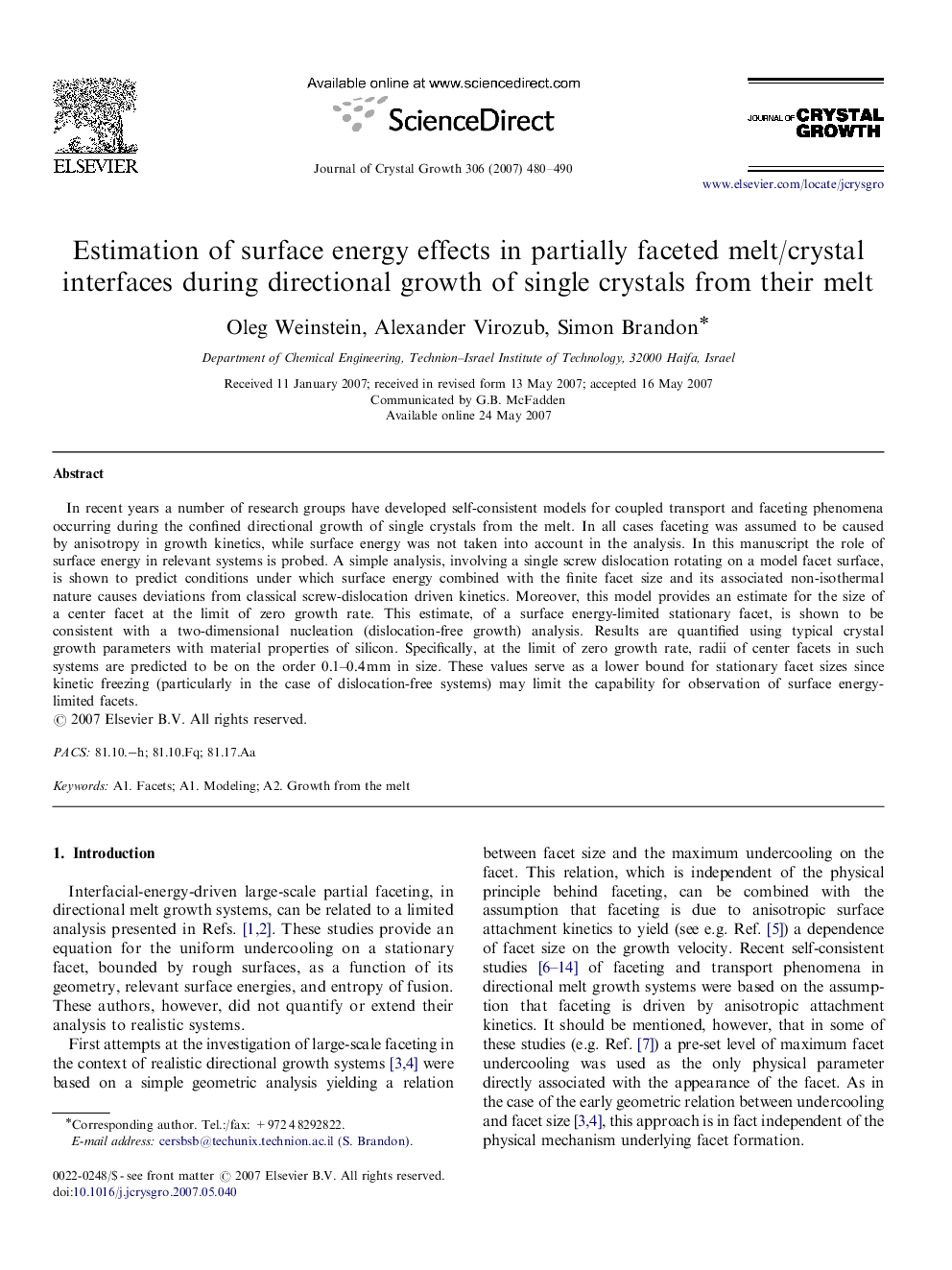| Article ID | Journal | Published Year | Pages | File Type |
|---|---|---|---|---|
| 1794971 | Journal of Crystal Growth | 2007 | 11 Pages |
In recent years a number of research groups have developed self-consistent models for coupled transport and faceting phenomena occurring during the confined directional growth of single crystals from the melt. In all cases faceting was assumed to be caused by anisotropy in growth kinetics, while surface energy was not taken into account in the analysis. In this manuscript the role of surface energy in relevant systems is probed. A simple analysis, involving a single screw dislocation rotating on a model facet surface, is shown to predict conditions under which surface energy combined with the finite facet size and its associated non-isothermal nature causes deviations from classical screw-dislocation driven kinetics. Moreover, this model provides an estimate for the size of a center facet at the limit of zero growth rate. This estimate, of a surface energy-limited stationary facet, is shown to be consistent with a two-dimensional nucleation (dislocation-free growth) analysis. Results are quantified using typical crystal growth parameters with material properties of silicon. Specifically, at the limit of zero growth rate, radii of center facets in such systems are predicted to be on the order 0.10.1–0.4mm in size. These values serve as a lower bound for stationary facet sizes since kinetic freezing (particularly in the case of dislocation-free systems) may limit the capability for observation of surface energy-limited facets.
